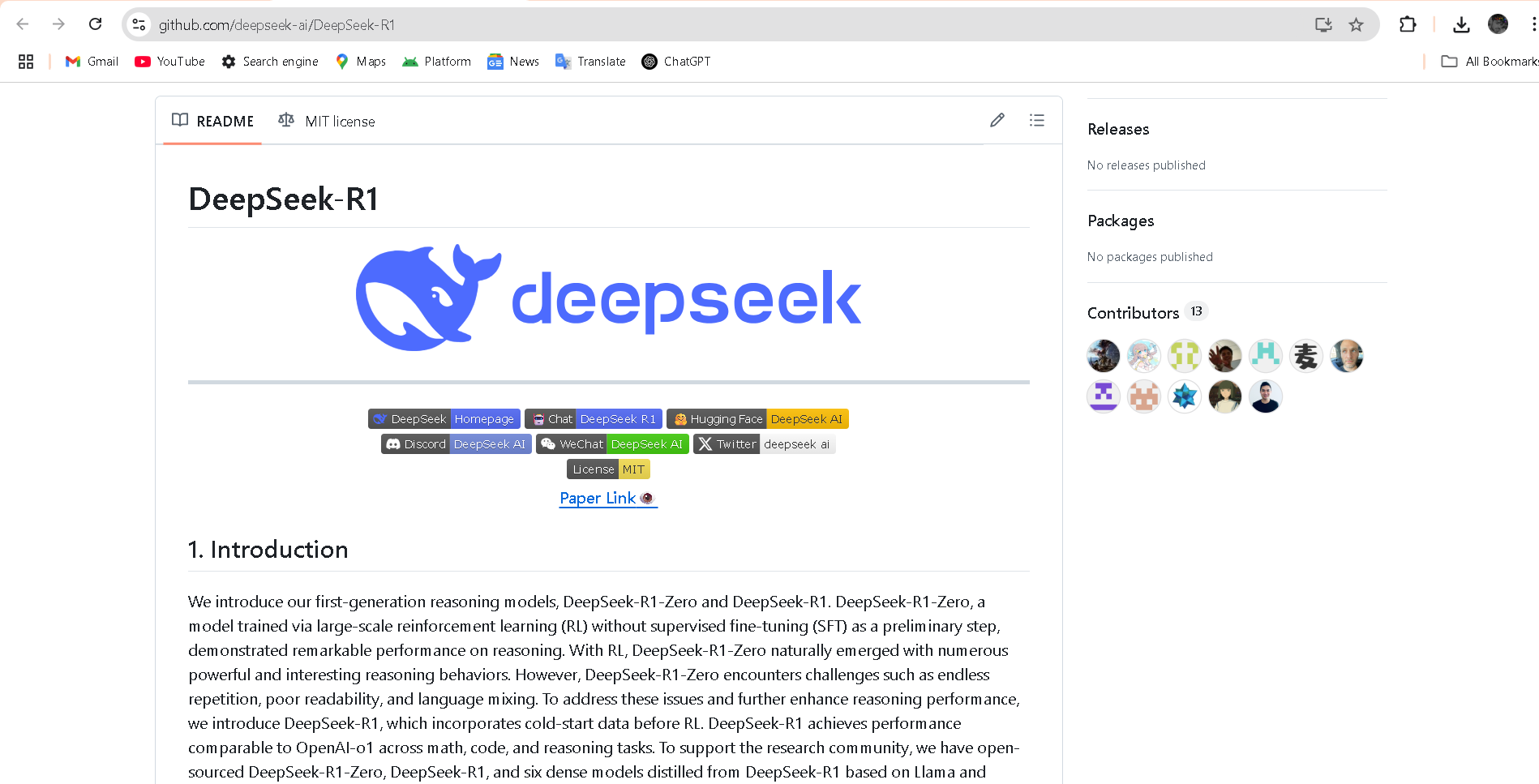
- Developers & Engineers: Deploy reasoning-capable LLMs without MoE complexity—ideal for edge and server deployment.
- Researchers & Students: Study distilled reasoning behavior in smaller models with full transparency.
- Enterprises & Startups: Benefit from top-tier benchmark performance with reduced compute footprints.
- Open-Source Advocates: Use, modify, and redistribute models freely under MIT license.
- Benchmarkers: Compare distilled versions (1.5B–70B) with dense peers like Qwen and Llama in reasoning and code tasks.
How to Use DeepSeek R1 Distill?
- Choose a Variant: Options include Qwen-1.5B, 7B, 14B, 32B, and Llama-8B/70B distilled checkpoints.
- Load Locally or on Cloud: Install via Hugging Face or run with tools like Ollama or vLLM.
- Provide Prompts: Use up to 32K tokens; models support chain-of-thought reasoning in math, coding, QA.
- Run Inference: Serve via local or cloud inference frameworks, or deploy as Chatbots or API services.
- Optimize & Expand: Best scaling seen in Qwen-32B variant; custom fine-tuning possible.
Qwen‑32B leads dense model benchmarks across tasks
Fully open-source—great for innovation and transparency
Versatile sizes for diverse deployment targets
Easy deployment via Hugging Face, Ollama, vLLM
- - *High Benchmark Efficiency*: Distilled variants, especially Qwen-32B, rival or surpass o1-mini on math, code, and reasoning tests.
- - *Compact Reasoning Models*: Bring chain-of-thought from massive MoE models into manageable dense models.
- - *Open-Source & MIT Licensed*: Enables commercial and academic use, fine-tuning, redistribution.
- - *Accessibility*: Usable on commodity hardware with inference tools like Ollama, vLLM.
- - *Broad Range & Flexibility*: Available in sizes from 1.5B to 70B to fit different latency/accuracy needs.
- Still lacks MoE-level context window and multimodal input
- Slightly behind full DeepSeek R1 in reasoning depth
- Early versions may show benchmark volatility depending on evaluation setup
Custom
Custom
Proud of the love you're getting? Show off your AI Toolbook reviews—then invite more fans to share the love and build your credibility.
Add an AI Toolbook badge to your site—an easy way to drive followers, showcase updates, and collect reviews. It's like a mini 24/7 billboard for your AI.
Reviews
Rating Distribution
Average score
Popular Mention
FAQs
Similar AI Tools
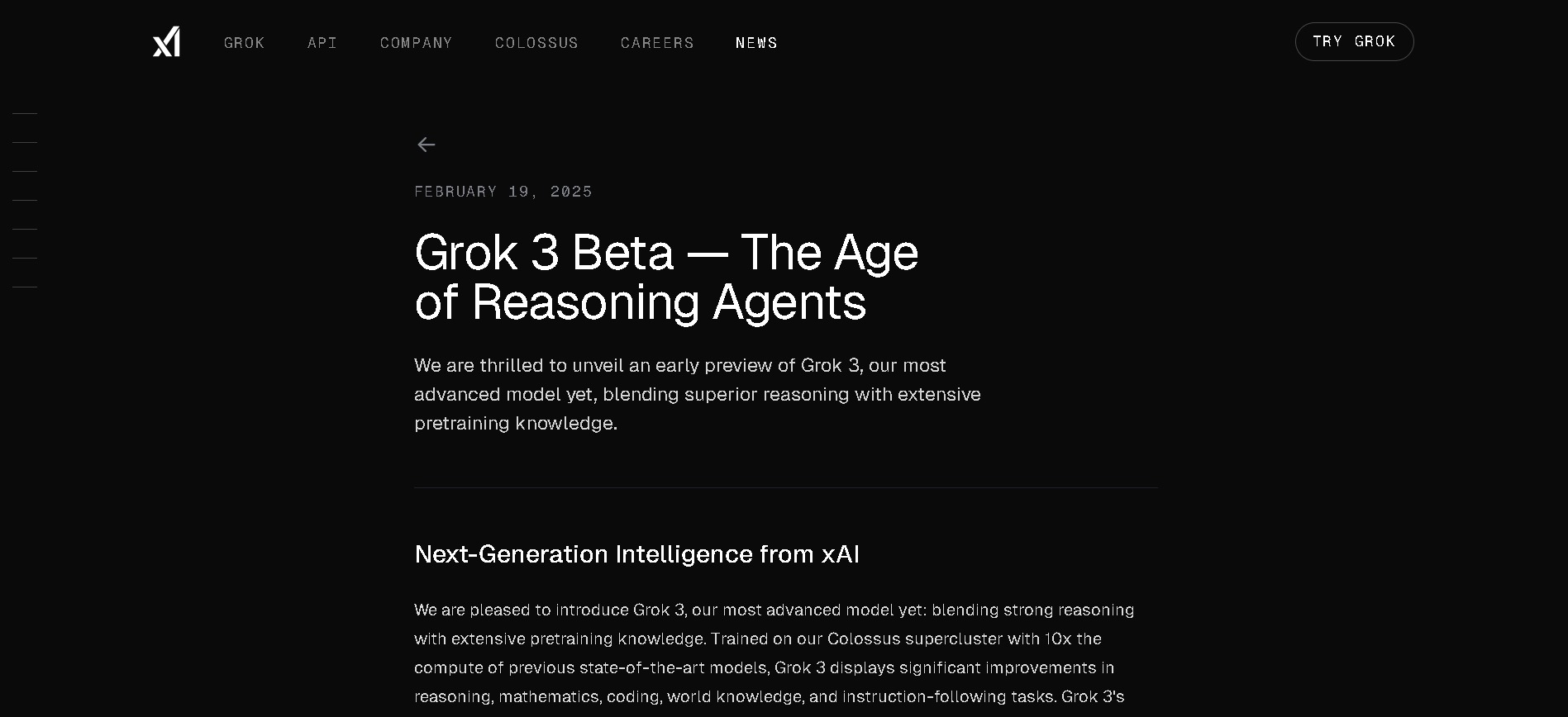

Grok 3
Grok 3 is the latest flagship chatbot by Elon Musk’s xAI, described as "the world’s smartest AI." It was trained on a massive 200,000‑GPU supercomputer and offers tenfold more computing power than Grok 2. Equipped with two reasoning modes—Think and Big Brain—and featuring DeepSearch (a contextual web-and-X research tool), Grok 3 excels in math, science, coding, and truth-seeking tasks—all while offering fast, lively conversational style.


Grok 3
Grok 3 is the latest flagship chatbot by Elon Musk’s xAI, described as "the world’s smartest AI." It was trained on a massive 200,000‑GPU supercomputer and offers tenfold more computing power than Grok 2. Equipped with two reasoning modes—Think and Big Brain—and featuring DeepSearch (a contextual web-and-X research tool), Grok 3 excels in math, science, coding, and truth-seeking tasks—all while offering fast, lively conversational style.


Grok 3
Grok 3 is the latest flagship chatbot by Elon Musk’s xAI, described as "the world’s smartest AI." It was trained on a massive 200,000‑GPU supercomputer and offers tenfold more computing power than Grok 2. Equipped with two reasoning modes—Think and Big Brain—and featuring DeepSearch (a contextual web-and-X research tool), Grok 3 excels in math, science, coding, and truth-seeking tasks—all while offering fast, lively conversational style.
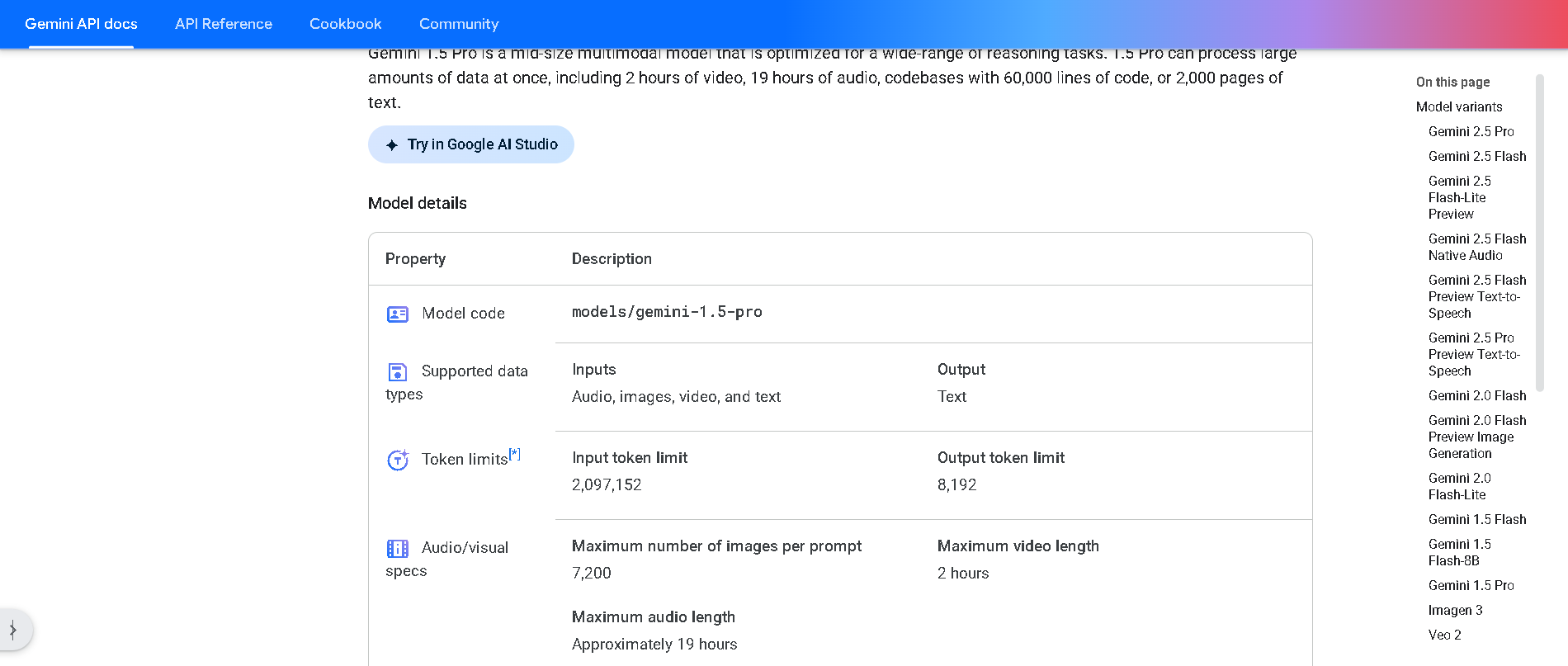

Gemini 1.5 Pro
Gemini 1.5 Pro is Google DeepMind’s mid-size multimodal model, using a mixture-of-experts (MoE) architecture to deliver high performance with lower compute. It supports text, images, audio, video, and code, and features an experimental context window up to 1 million tokens—the longest among widely available models. It excels in long-document reasoning, multimodal understanding, and in-context learning.


Gemini 1.5 Pro
Gemini 1.5 Pro is Google DeepMind’s mid-size multimodal model, using a mixture-of-experts (MoE) architecture to deliver high performance with lower compute. It supports text, images, audio, video, and code, and features an experimental context window up to 1 million tokens—the longest among widely available models. It excels in long-document reasoning, multimodal understanding, and in-context learning.


Gemini 1.5 Pro
Gemini 1.5 Pro is Google DeepMind’s mid-size multimodal model, using a mixture-of-experts (MoE) architecture to deliver high performance with lower compute. It supports text, images, audio, video, and code, and features an experimental context window up to 1 million tokens—the longest among widely available models. It excels in long-document reasoning, multimodal understanding, and in-context learning.
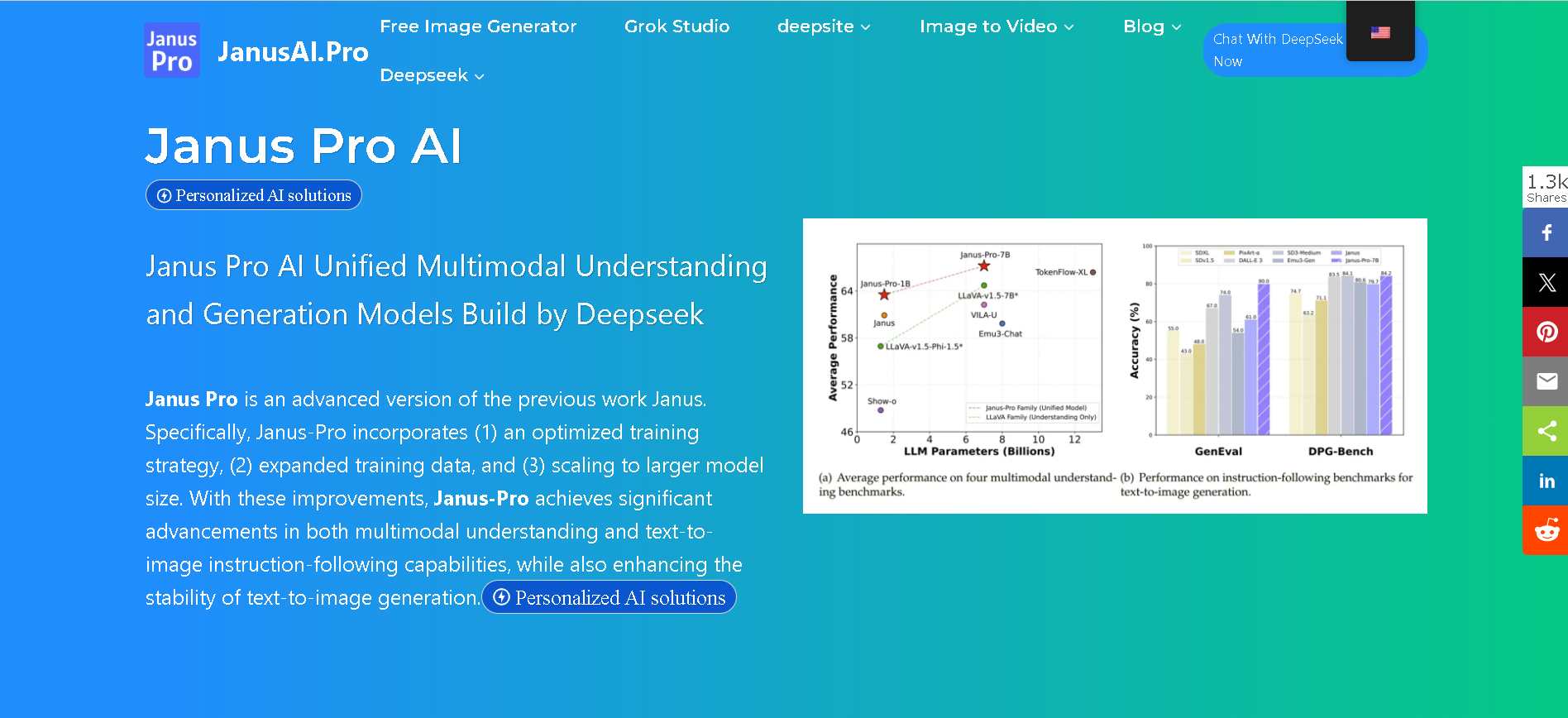

Janus-Pro-7B
anus Pro 7B is DeepSeek’s flagship open-source multimodal AI model, unifying vision understanding and text-to-image generation within a single transformer architecture. Built on DeepSeek‑LLM‑7B, it uses a decoupled visual encoding approach paired with SigLIP‑L and VQ tokenizer, delivering superior visual fidelity, prompt alignment, and stability across tasks—benchmarked ahead of OpenAI’s DALL‑E 3 and Stable Diffusion variants.


Janus-Pro-7B
anus Pro 7B is DeepSeek’s flagship open-source multimodal AI model, unifying vision understanding and text-to-image generation within a single transformer architecture. Built on DeepSeek‑LLM‑7B, it uses a decoupled visual encoding approach paired with SigLIP‑L and VQ tokenizer, delivering superior visual fidelity, prompt alignment, and stability across tasks—benchmarked ahead of OpenAI’s DALL‑E 3 and Stable Diffusion variants.


Janus-Pro-7B
anus Pro 7B is DeepSeek’s flagship open-source multimodal AI model, unifying vision understanding and text-to-image generation within a single transformer architecture. Built on DeepSeek‑LLM‑7B, it uses a decoupled visual encoding approach paired with SigLIP‑L and VQ tokenizer, delivering superior visual fidelity, prompt alignment, and stability across tasks—benchmarked ahead of OpenAI’s DALL‑E 3 and Stable Diffusion variants.
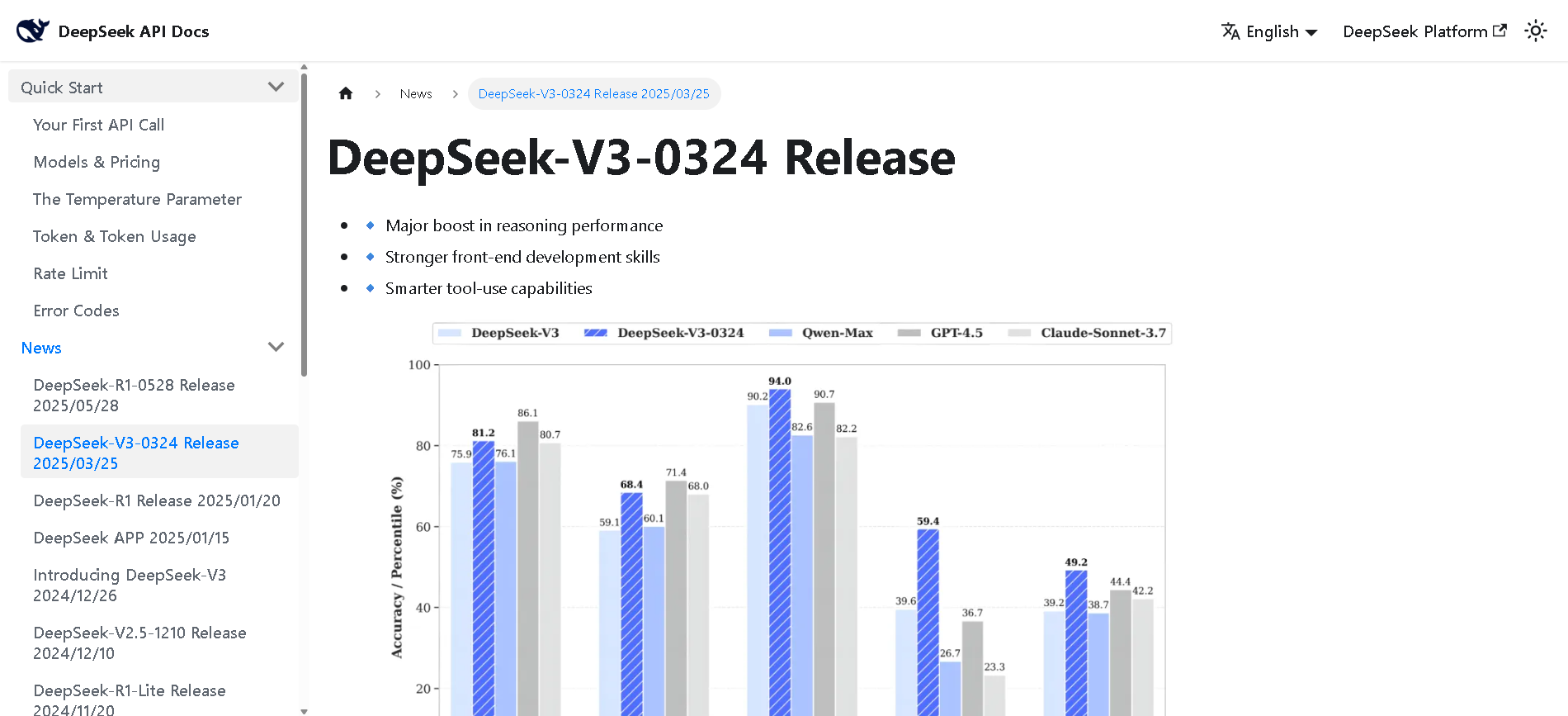

DeepSeek-V3-0324
DeepSeek V3 (0324) is the latest open-source Mixture-of-Experts (MoE) language model from DeepSeek, featuring 671B parameters (37B active per token). Released in March 2025 under the MIT license, it builds on DeepSeek V3 with major enhancements in reasoning, coding, front-end generation, and Chinese proficiency. It maintains cost-efficiency and function-calling support.


DeepSeek-V3-0324
DeepSeek V3 (0324) is the latest open-source Mixture-of-Experts (MoE) language model from DeepSeek, featuring 671B parameters (37B active per token). Released in March 2025 under the MIT license, it builds on DeepSeek V3 with major enhancements in reasoning, coding, front-end generation, and Chinese proficiency. It maintains cost-efficiency and function-calling support.


DeepSeek-V3-0324
DeepSeek V3 (0324) is the latest open-source Mixture-of-Experts (MoE) language model from DeepSeek, featuring 671B parameters (37B active per token). Released in March 2025 under the MIT license, it builds on DeepSeek V3 with major enhancements in reasoning, coding, front-end generation, and Chinese proficiency. It maintains cost-efficiency and function-calling support.
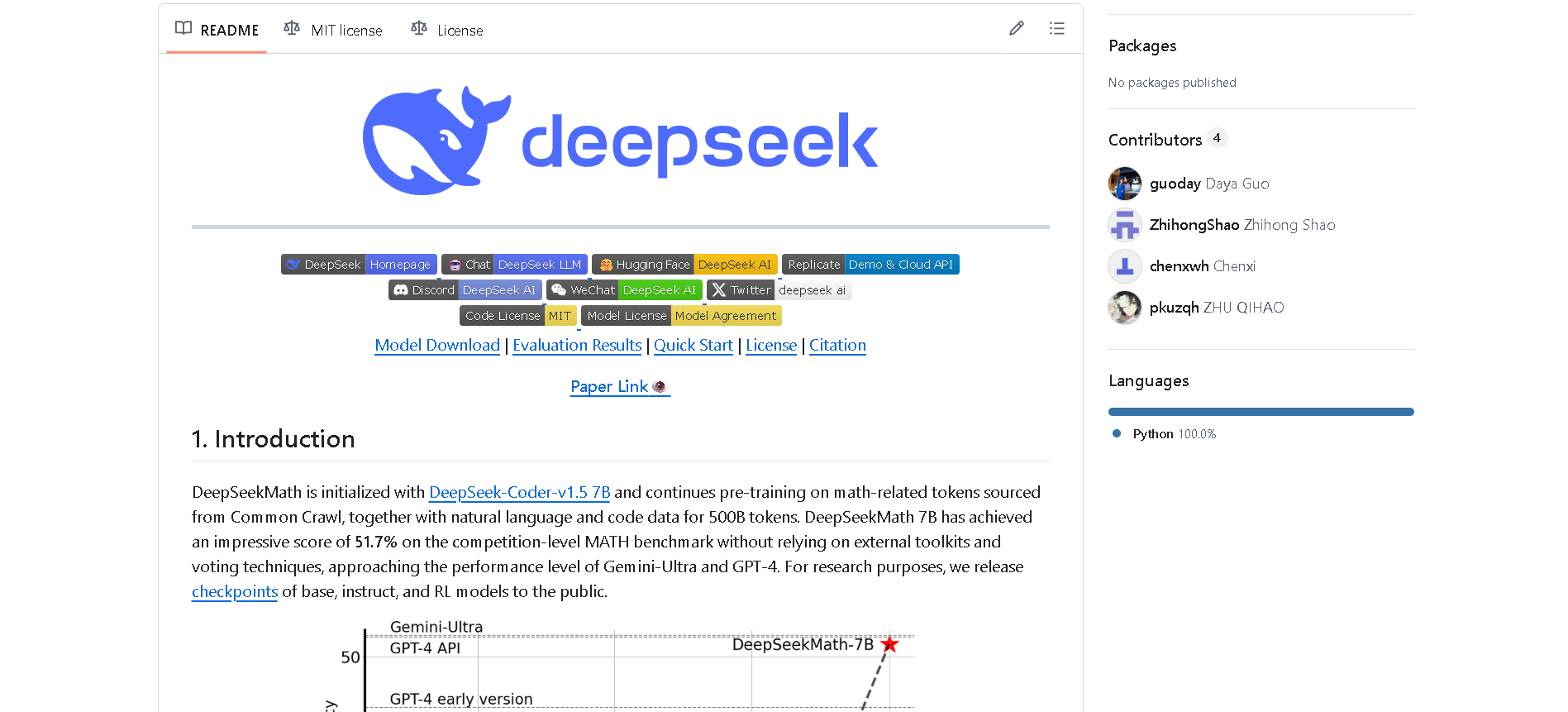

DeepSeek-Math
DeepSeek Math (also called DeepSeekMath) is DeepSeek’s specialized, open-source, math-centric large language model. Built on DeepSeek‑Coder‑Base‑7B and further pre-trained on ~500B tokens—including 120B from its own math-focused corpus—it excels at competition-level reasoning, achieving 51.7 % on the MATH benchmark and ~64.2 % on GSM8K, rivaling models like GPT‑4 and Gemini‑Ultra—all without external toolkits or voting methods .


DeepSeek-Math
DeepSeek Math (also called DeepSeekMath) is DeepSeek’s specialized, open-source, math-centric large language model. Built on DeepSeek‑Coder‑Base‑7B and further pre-trained on ~500B tokens—including 120B from its own math-focused corpus—it excels at competition-level reasoning, achieving 51.7 % on the MATH benchmark and ~64.2 % on GSM8K, rivaling models like GPT‑4 and Gemini‑Ultra—all without external toolkits or voting methods .


DeepSeek-Math
DeepSeek Math (also called DeepSeekMath) is DeepSeek’s specialized, open-source, math-centric large language model. Built on DeepSeek‑Coder‑Base‑7B and further pre-trained on ~500B tokens—including 120B from its own math-focused corpus—it excels at competition-level reasoning, achieving 51.7 % on the MATH benchmark and ~64.2 % on GSM8K, rivaling models like GPT‑4 and Gemini‑Ultra—all without external toolkits or voting methods .
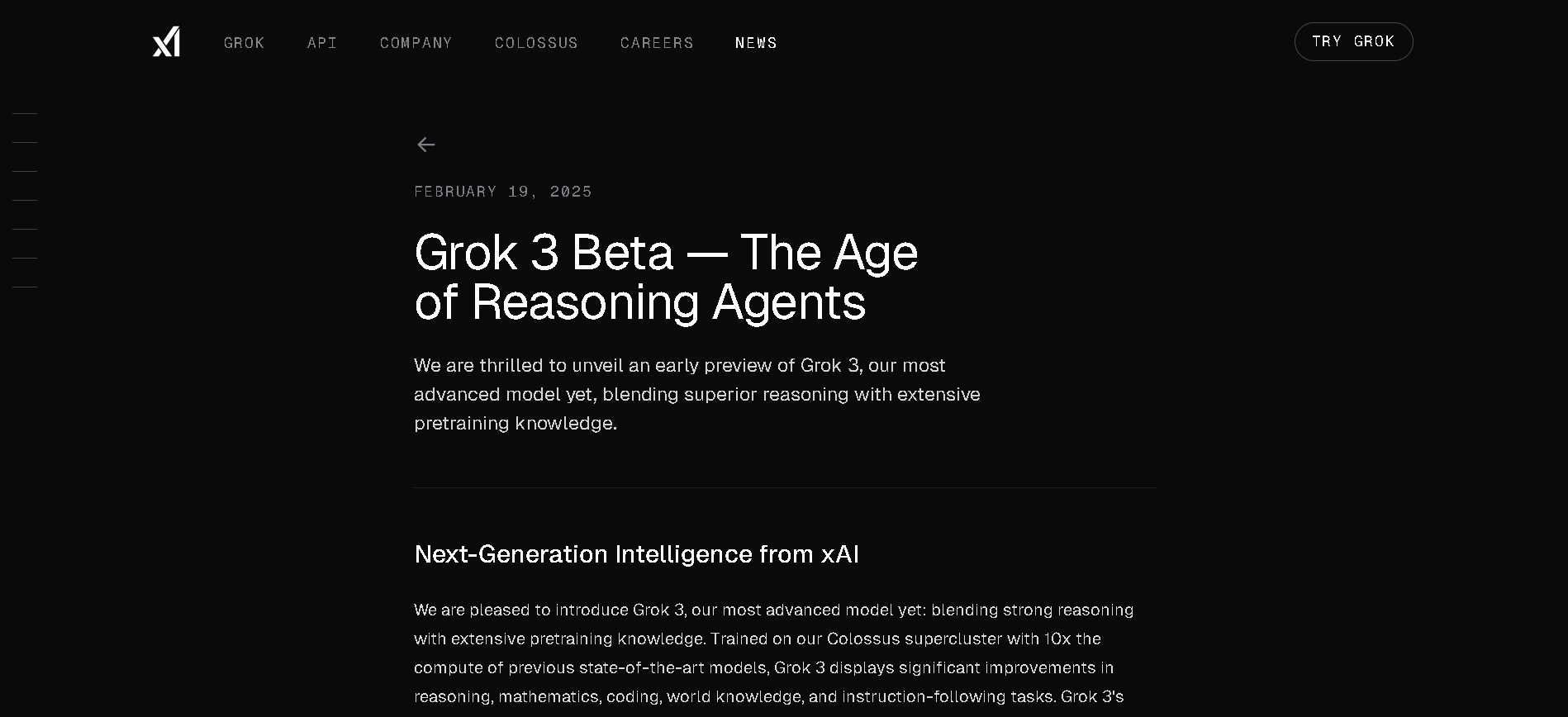
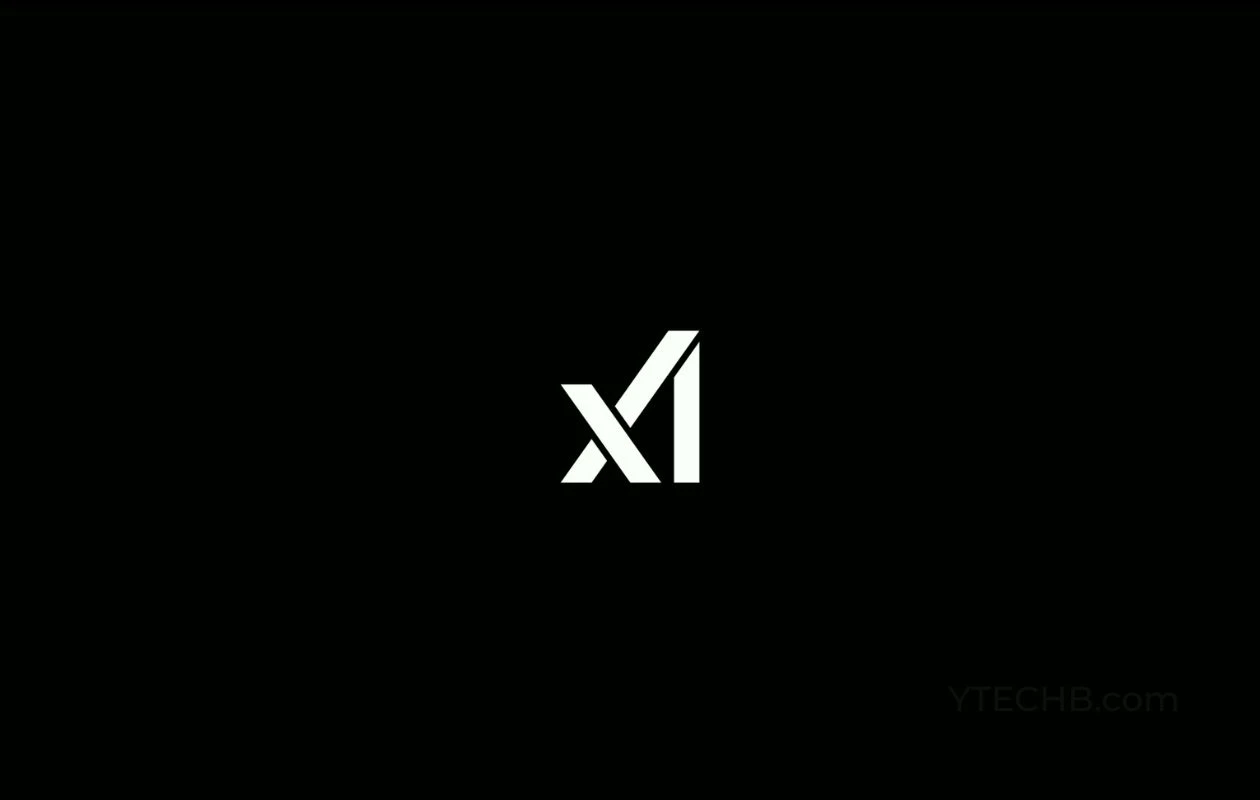
Grok 3 Latest
Grok 3 is xAI’s newest flagship AI chatbot, released on February 17, 2025, running on the massive Colossus supercluster (~200,000 GPUs). It offers elite-level reasoning, chain-of-thought transparency (“Think” mode), advanced “Big Brain” deeper reasoning, multimodal support (text, images), and integrated real-time DeepSearch—positioning it as a top-tier competitor to GPT‑4o, Gemini, Claude, and DeepSeek V3 on benchmarks.


Grok 3 Latest
Grok 3 is xAI’s newest flagship AI chatbot, released on February 17, 2025, running on the massive Colossus supercluster (~200,000 GPUs). It offers elite-level reasoning, chain-of-thought transparency (“Think” mode), advanced “Big Brain” deeper reasoning, multimodal support (text, images), and integrated real-time DeepSearch—positioning it as a top-tier competitor to GPT‑4o, Gemini, Claude, and DeepSeek V3 on benchmarks.


Grok 3 Latest
Grok 3 is xAI’s newest flagship AI chatbot, released on February 17, 2025, running on the massive Colossus supercluster (~200,000 GPUs). It offers elite-level reasoning, chain-of-thought transparency (“Think” mode), advanced “Big Brain” deeper reasoning, multimodal support (text, images), and integrated real-time DeepSearch—positioning it as a top-tier competitor to GPT‑4o, Gemini, Claude, and DeepSeek V3 on benchmarks.
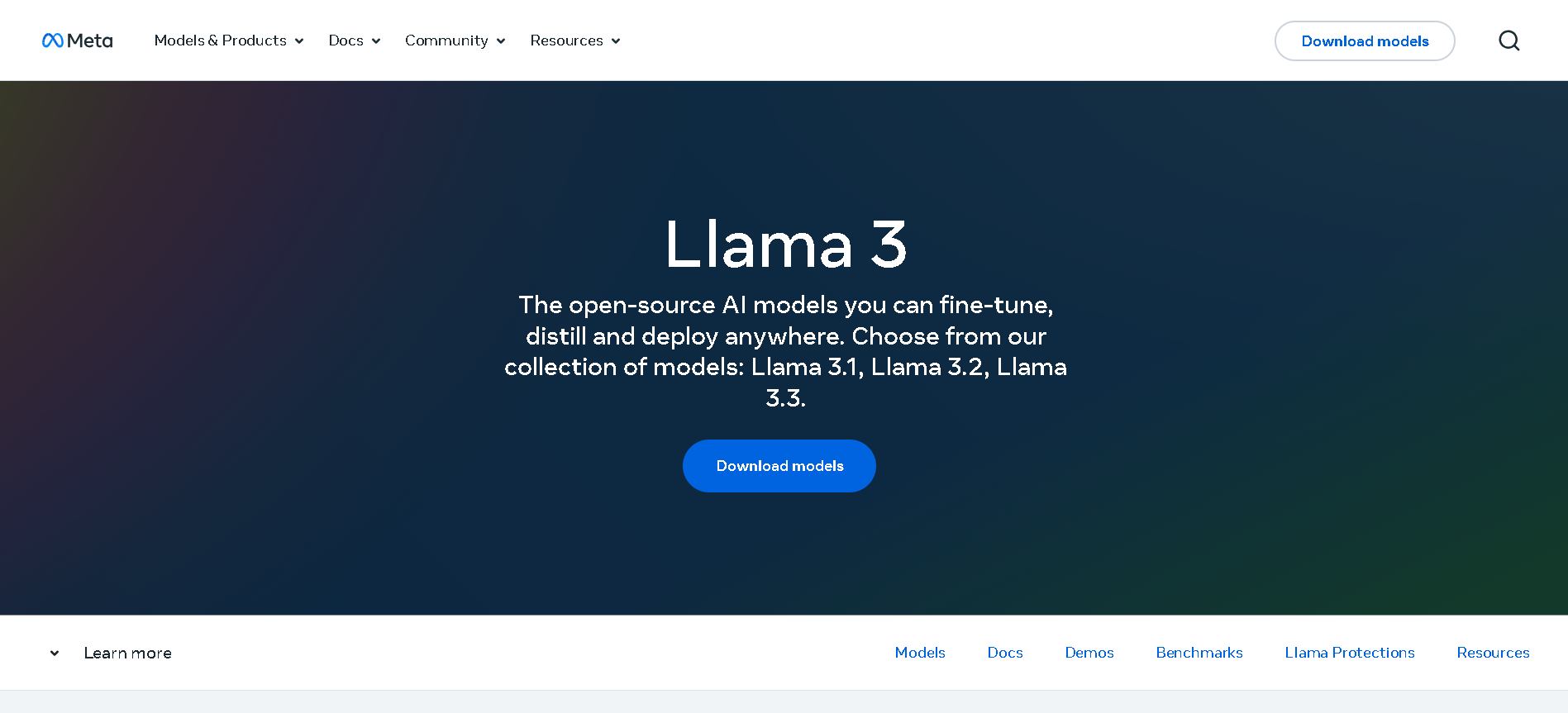

Meta Llama 3.2
Llama 3.2 is Meta’s multimodal and lightweight update to its Llama 3 line, released on September 25, 2024. The family includes 1B and 3B text-only models optimized for edge devices, as well as 11B and 90B Vision models capable of image understanding. It offers a 128K-token context window, Grouped-Query Attention for efficient inference, and opens up on-device, private AI with strong multilingual (e.g. Hindi, Spanish) support.


Meta Llama 3.2
Llama 3.2 is Meta’s multimodal and lightweight update to its Llama 3 line, released on September 25, 2024. The family includes 1B and 3B text-only models optimized for edge devices, as well as 11B and 90B Vision models capable of image understanding. It offers a 128K-token context window, Grouped-Query Attention for efficient inference, and opens up on-device, private AI with strong multilingual (e.g. Hindi, Spanish) support.


Meta Llama 3.2
Llama 3.2 is Meta’s multimodal and lightweight update to its Llama 3 line, released on September 25, 2024. The family includes 1B and 3B text-only models optimized for edge devices, as well as 11B and 90B Vision models capable of image understanding. It offers a 128K-token context window, Grouped-Query Attention for efficient inference, and opens up on-device, private AI with strong multilingual (e.g. Hindi, Spanish) support.
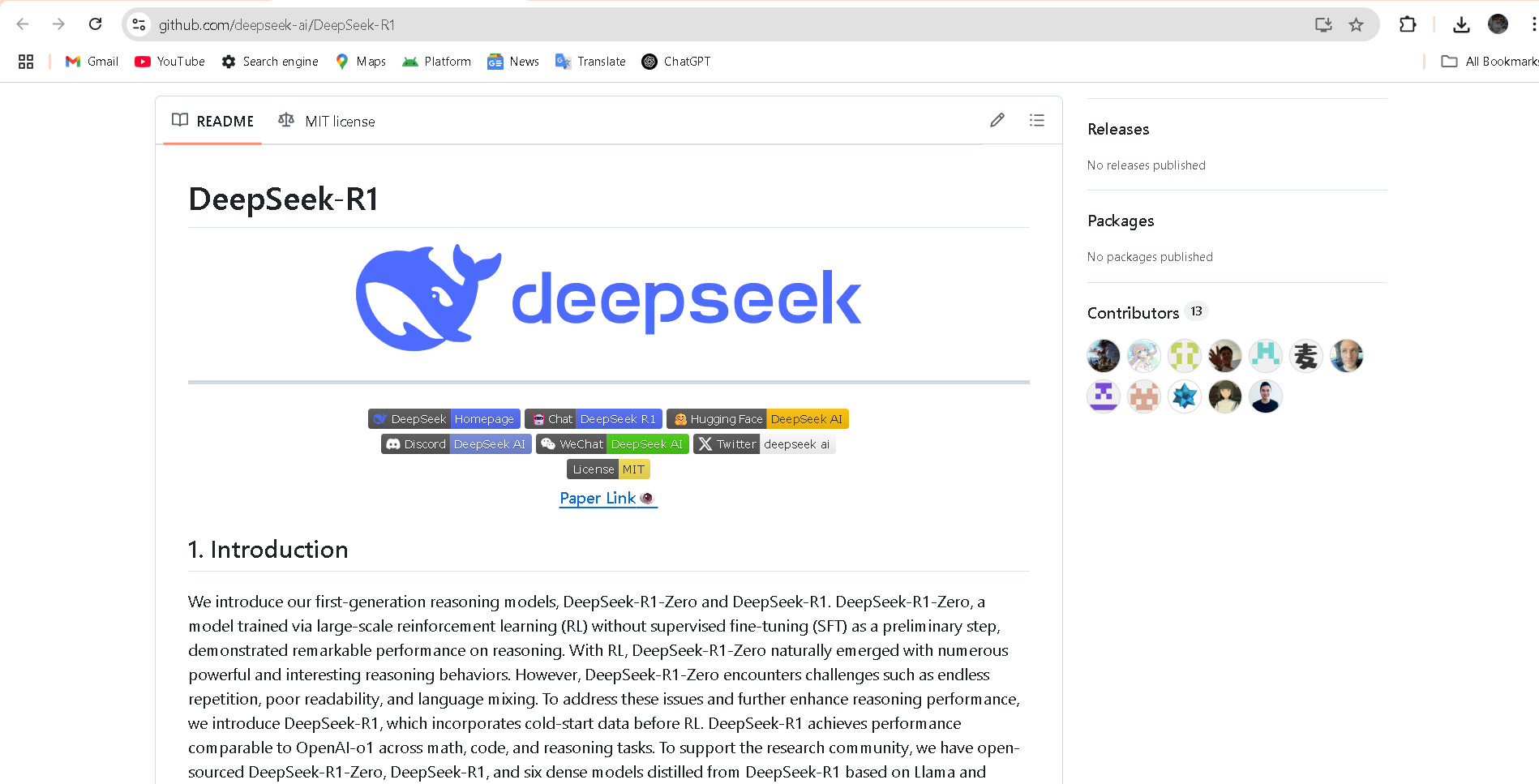
DeepSeek R1 Lite Preview is the lightweight preview of DeepSeek’s flagship reasoning model, released on November 20, 2024. It’s designed for advanced chain-of-thought reasoning in math, coding, and logic, showcasing transparent, multi-round reasoning. It achieves performance on par—or exceeding—OpenAI’s o1-preview on benchmarks like AIME and MATH, using test-time compute scaling.


DeepSeek-R1-Lite-P..
DeepSeek R1 Lite Preview is the lightweight preview of DeepSeek’s flagship reasoning model, released on November 20, 2024. It’s designed for advanced chain-of-thought reasoning in math, coding, and logic, showcasing transparent, multi-round reasoning. It achieves performance on par—or exceeding—OpenAI’s o1-preview on benchmarks like AIME and MATH, using test-time compute scaling.


DeepSeek-R1-Lite-P..
DeepSeek R1 Lite Preview is the lightweight preview of DeepSeek’s flagship reasoning model, released on November 20, 2024. It’s designed for advanced chain-of-thought reasoning in math, coding, and logic, showcasing transparent, multi-round reasoning. It achieves performance on par—or exceeding—OpenAI’s o1-preview on benchmarks like AIME and MATH, using test-time compute scaling.
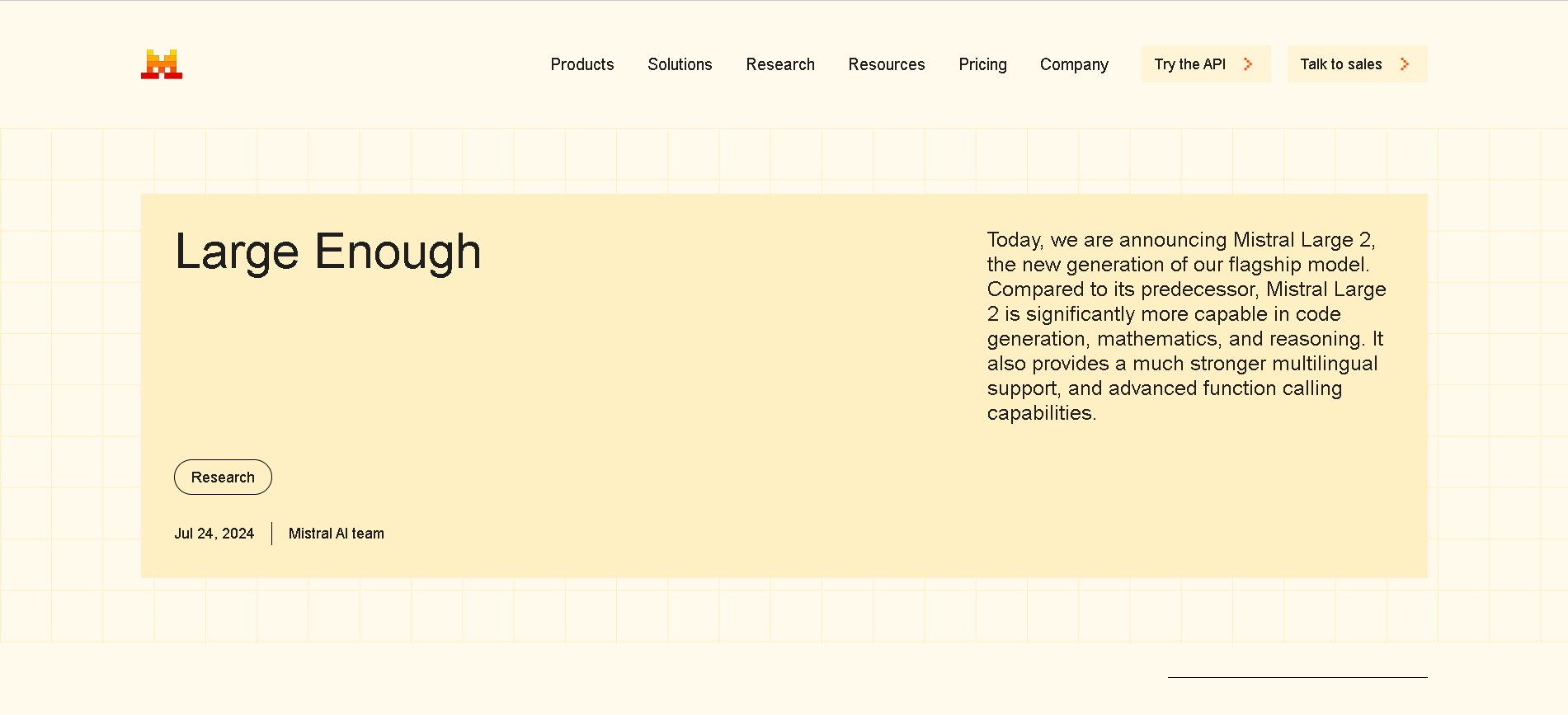
Mistral Large 2
Mistral Large 2 is the second-generation flagship model from Mistral AI, released in July 2024. Also referenced as mistral-large-2407, it’s a 123 B-parameter dense LLM with a 128 K-token context window, supporting dozens of languages and 80+ coding languages. It excels in reasoning, code generation, mathematics, instruction-following, and function calling—designed for high throughput on single-node setups.

Mistral Large 2
Mistral Large 2 is the second-generation flagship model from Mistral AI, released in July 2024. Also referenced as mistral-large-2407, it’s a 123 B-parameter dense LLM with a 128 K-token context window, supporting dozens of languages and 80+ coding languages. It excels in reasoning, code generation, mathematics, instruction-following, and function calling—designed for high throughput on single-node setups.

Mistral Large 2
Mistral Large 2 is the second-generation flagship model from Mistral AI, released in July 2024. Also referenced as mistral-large-2407, it’s a 123 B-parameter dense LLM with a 128 K-token context window, supporting dozens of languages and 80+ coding languages. It excels in reasoning, code generation, mathematics, instruction-following, and function calling—designed for high throughput on single-node setups.
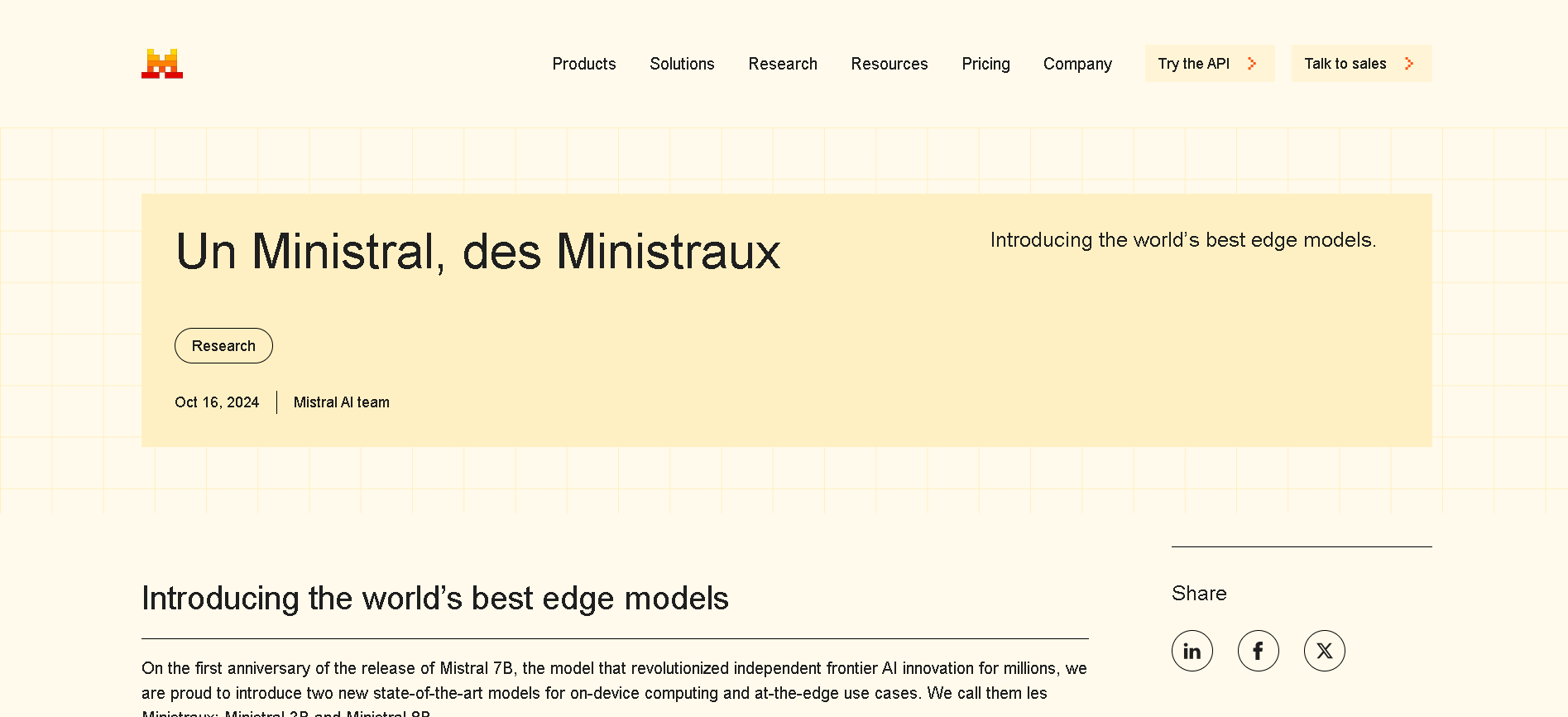
Mistral Ministral ..
Ministral refers to Mistral AI’s new “Les Ministraux” series—comprising Ministral 3B and Ministral 8B—launched in October 2024. These are ultra-efficient, open-weight LLMs optimized for on-device and edge computing, with a massive 128 K‑token context window. They offer strong reasoning, knowledge, multilingual support, and function-calling capabilities, outperforming previous models in the sub‑10B parameter class

Mistral Ministral ..
Ministral refers to Mistral AI’s new “Les Ministraux” series—comprising Ministral 3B and Ministral 8B—launched in October 2024. These are ultra-efficient, open-weight LLMs optimized for on-device and edge computing, with a massive 128 K‑token context window. They offer strong reasoning, knowledge, multilingual support, and function-calling capabilities, outperforming previous models in the sub‑10B parameter class

Mistral Ministral ..
Ministral refers to Mistral AI’s new “Les Ministraux” series—comprising Ministral 3B and Ministral 8B—launched in October 2024. These are ultra-efficient, open-weight LLMs optimized for on-device and edge computing, with a massive 128 K‑token context window. They offer strong reasoning, knowledge, multilingual support, and function-calling capabilities, outperforming previous models in the sub‑10B parameter class
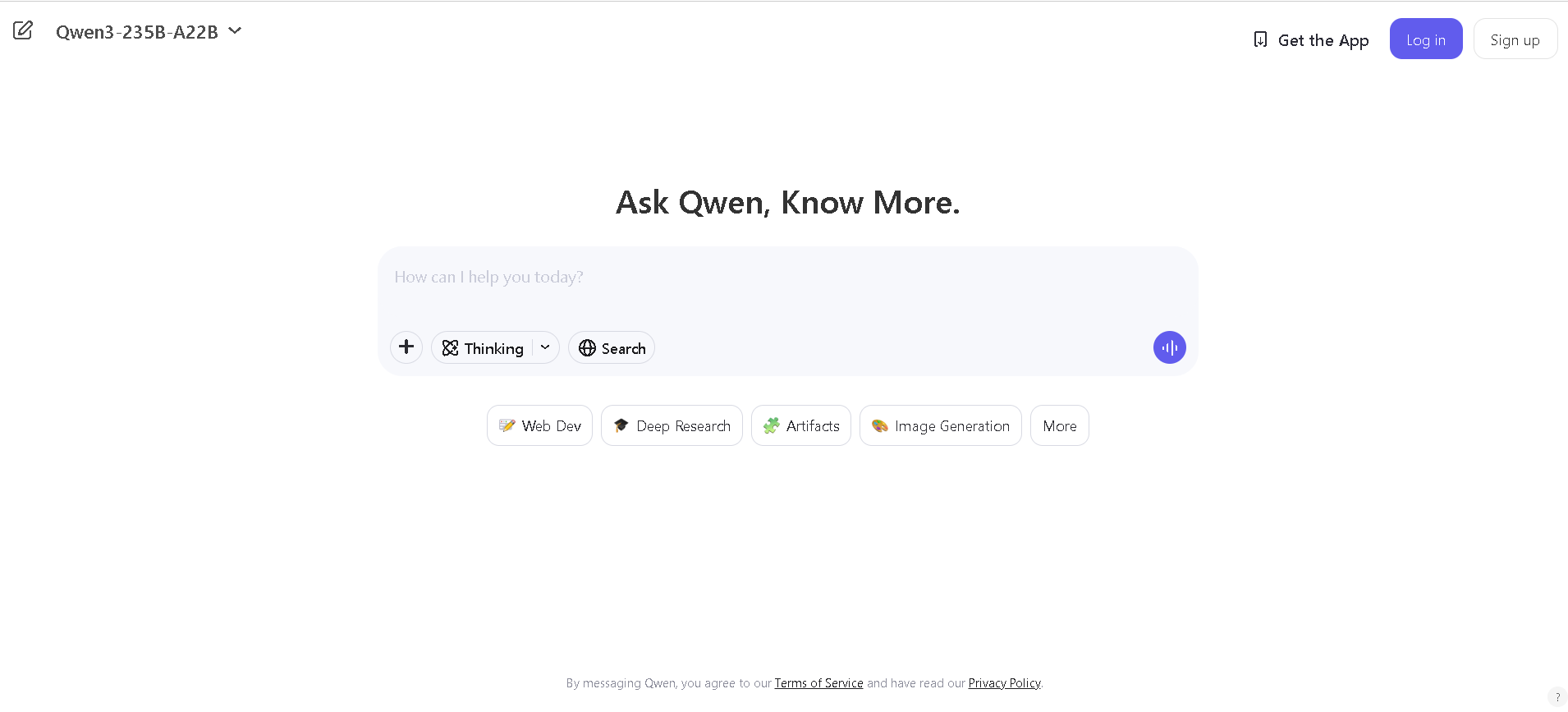
Qwen Chat
Qwen Chat is Alibaba Cloud’s conversational AI assistant built on the Qwen series (e.g., Qwen‑7B‑Chat, Qwen1.5‑7B‑Chat, Qwen‑VL, Qwen‑Audio, and Qwen2.5‑Omni). It supports text, vision, audio, and video understanding, plus image and document processing, web search integration, and image generation—all through a unified chat interface.

Qwen Chat
Qwen Chat is Alibaba Cloud’s conversational AI assistant built on the Qwen series (e.g., Qwen‑7B‑Chat, Qwen1.5‑7B‑Chat, Qwen‑VL, Qwen‑Audio, and Qwen2.5‑Omni). It supports text, vision, audio, and video understanding, plus image and document processing, web search integration, and image generation—all through a unified chat interface.

Qwen Chat
Qwen Chat is Alibaba Cloud’s conversational AI assistant built on the Qwen series (e.g., Qwen‑7B‑Chat, Qwen1.5‑7B‑Chat, Qwen‑VL, Qwen‑Audio, and Qwen2.5‑Omni). It supports text, vision, audio, and video understanding, plus image and document processing, web search integration, and image generation—all through a unified chat interface.
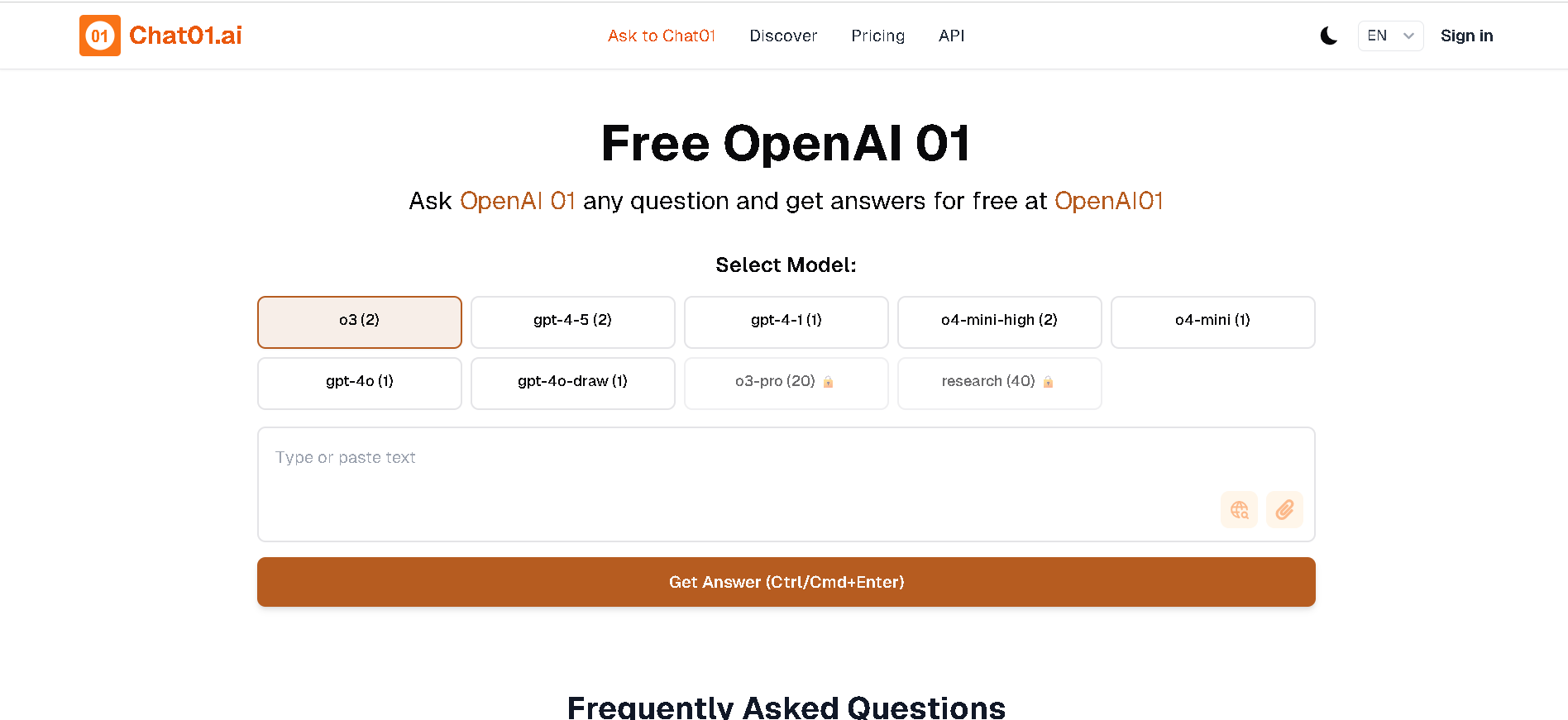
Chat 01 AI
Chat01.ai is a platform that offers free and unlimited chat with OpenAI 01, a new series of AI models. These models are specifically designed for complex reasoning and problem-solving in areas such as science, coding, and math, by employing a "think more before responding" approach, trying different strategies, and recognizing mistakes.

Chat 01 AI
Chat01.ai is a platform that offers free and unlimited chat with OpenAI 01, a new series of AI models. These models are specifically designed for complex reasoning and problem-solving in areas such as science, coding, and math, by employing a "think more before responding" approach, trying different strategies, and recognizing mistakes.

Chat 01 AI
Chat01.ai is a platform that offers free and unlimited chat with OpenAI 01, a new series of AI models. These models are specifically designed for complex reasoning and problem-solving in areas such as science, coding, and math, by employing a "think more before responding" approach, trying different strategies, and recognizing mistakes.
Editorial Note
This page was researched and written by the ATB Editorial Team. Our team researches each AI tool by reviewing its official website, testing features, exploring real use cases, and considering user feedback. Every page is fact-checked and regularly updated to ensure the information stays accurate, neutral, and useful for our readers.
If you have any suggestions or questions, email us at hello@aitoolbook.ai
